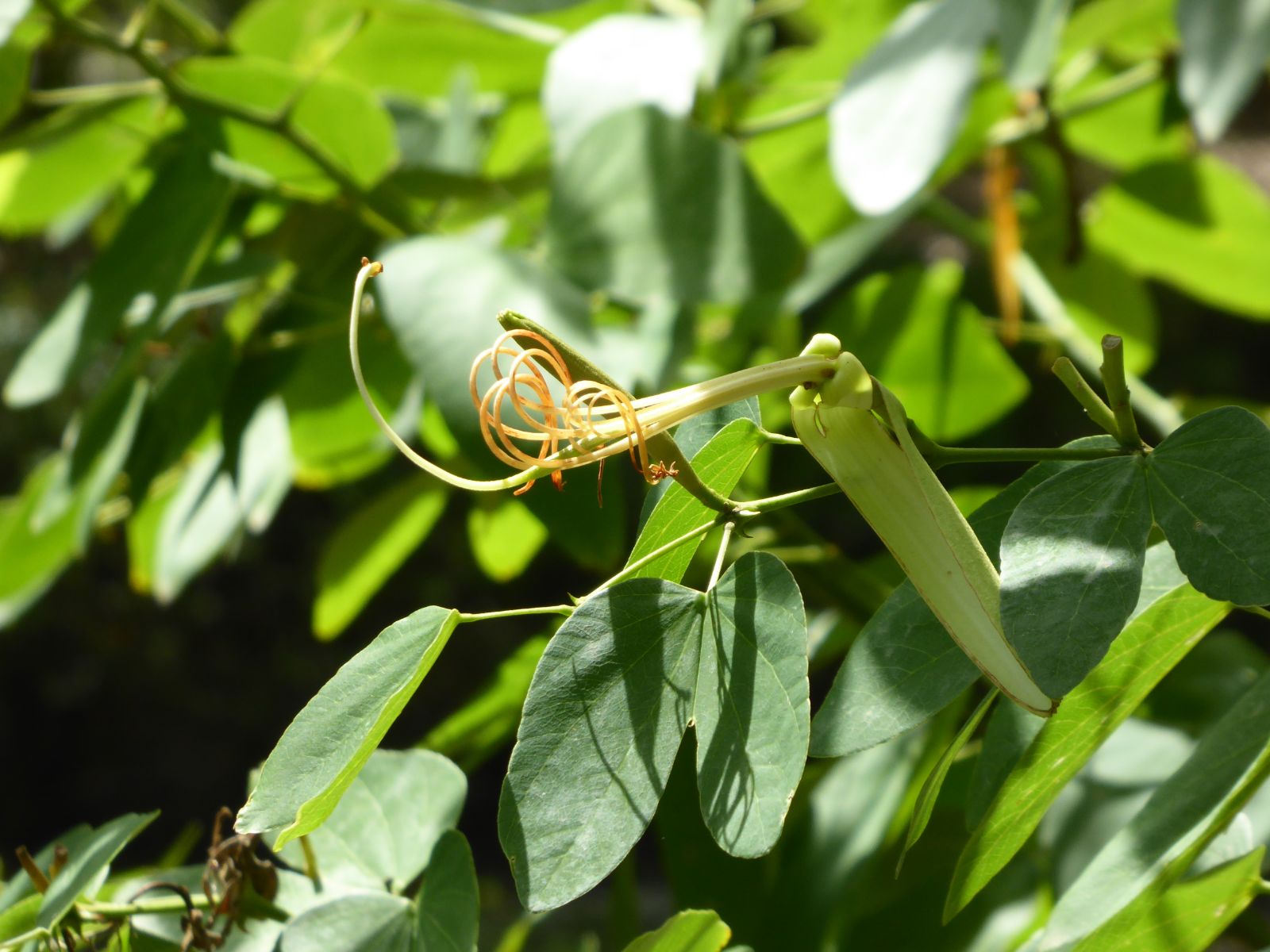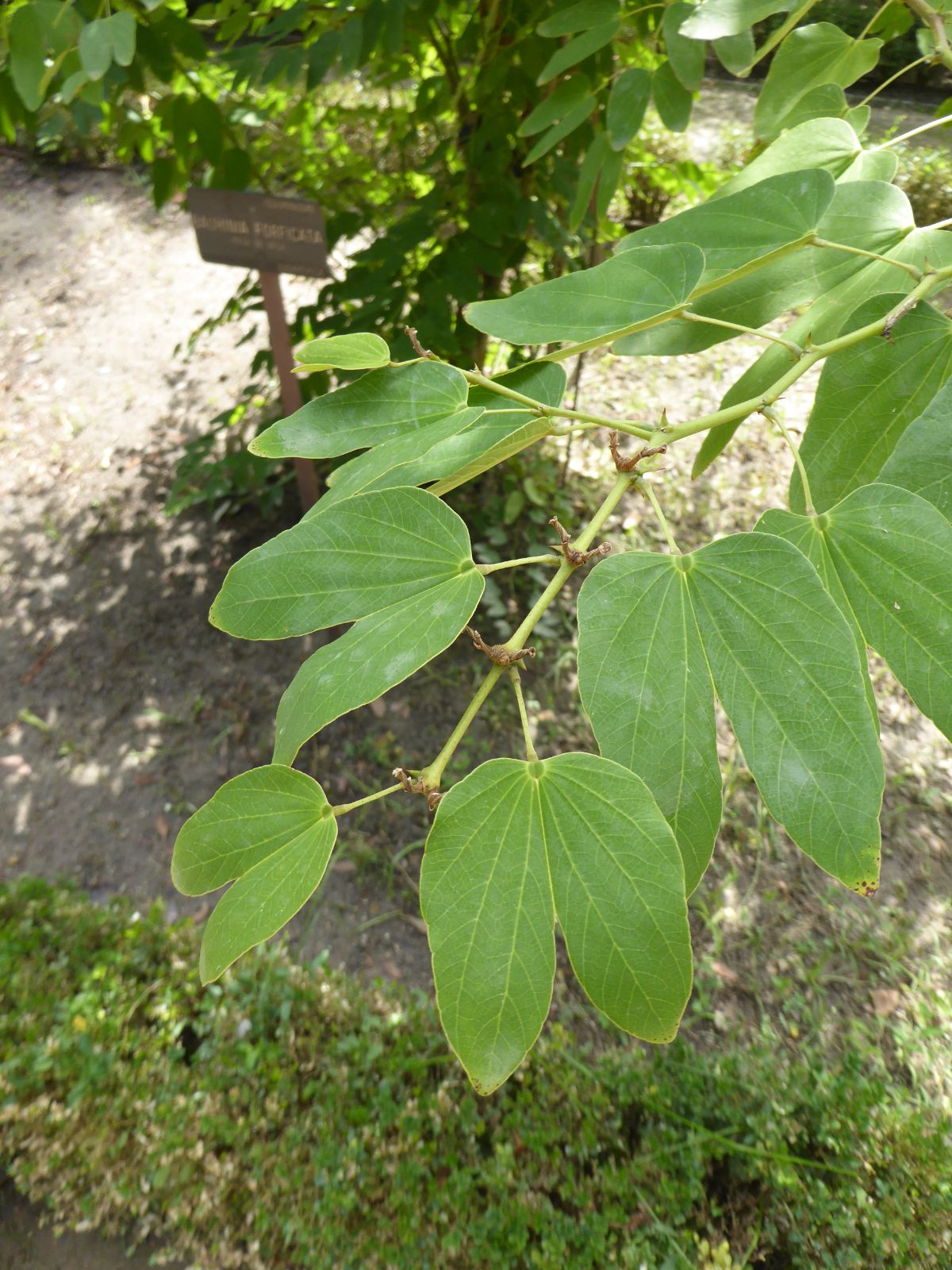Bauhinia
Credits
Article from Bean's Trees and Shrubs Hardy in the British Isles
Recommended citation
'Bauhinia' from the website Trees and Shrubs Online (treesandshrubsonline.
Family
- Leguminosae
Bauhinia is a large and curious genus of about 150 species, chiefly found in tropical countries, most abundantly in Brazil and India. Usually they are climbers, some attaining to an enormous size. B. vahlii, an Indian species, is often 100 yards long, but others are simply bushy. The leaves constitute their most distinctive character, each one being either divided into two kidney-shaped lobes by a cleft of varying depth, or into two quite separate leaflets. From the base radiate several conspicuous veins. The flowers, usually in terminal clusters, have no resemblance to the typical pea-shape of the family, the five petals spreading in the fashion of an ordinary flower, although they are unequal in size. Stamens ten, usually some of them imperfect. Fruit a flat pod. The genus is most nearly related to Cercis amongst hardy trees. The name commemorates two brothers, John and Casper Bauhin, famous botanists of the sixteenth century, who worked in such close companionship that the twin leaflets were thought to symbolise their labours.


